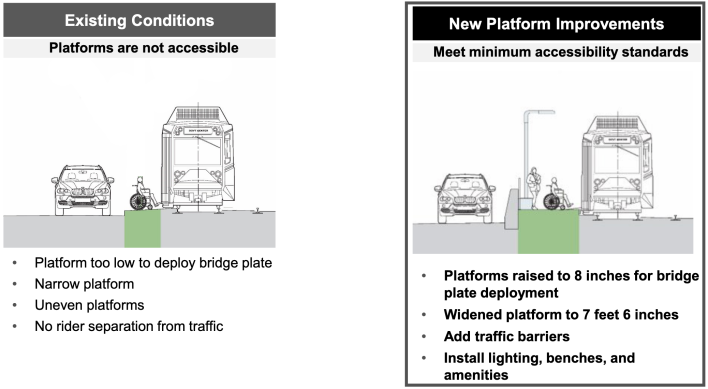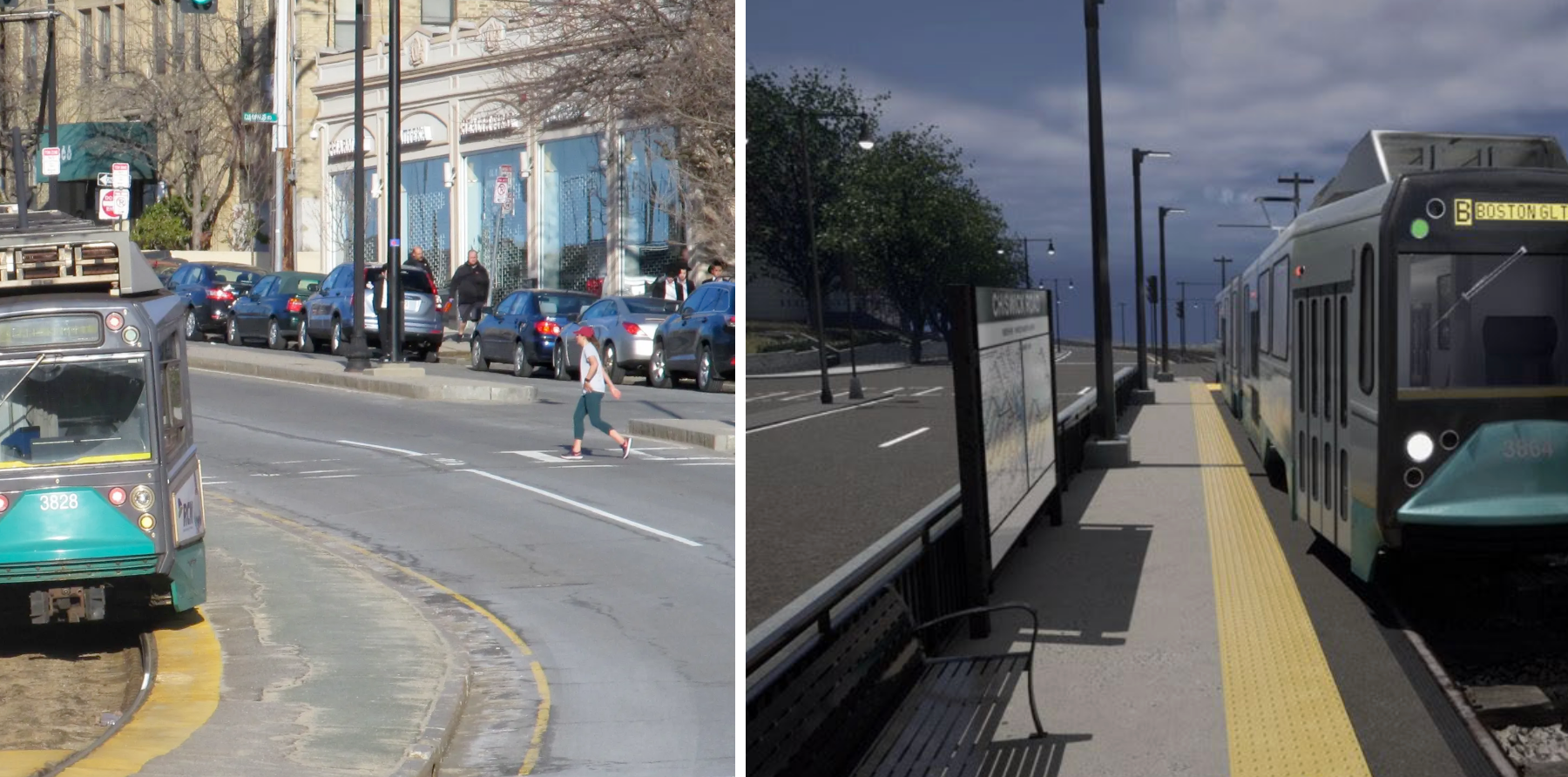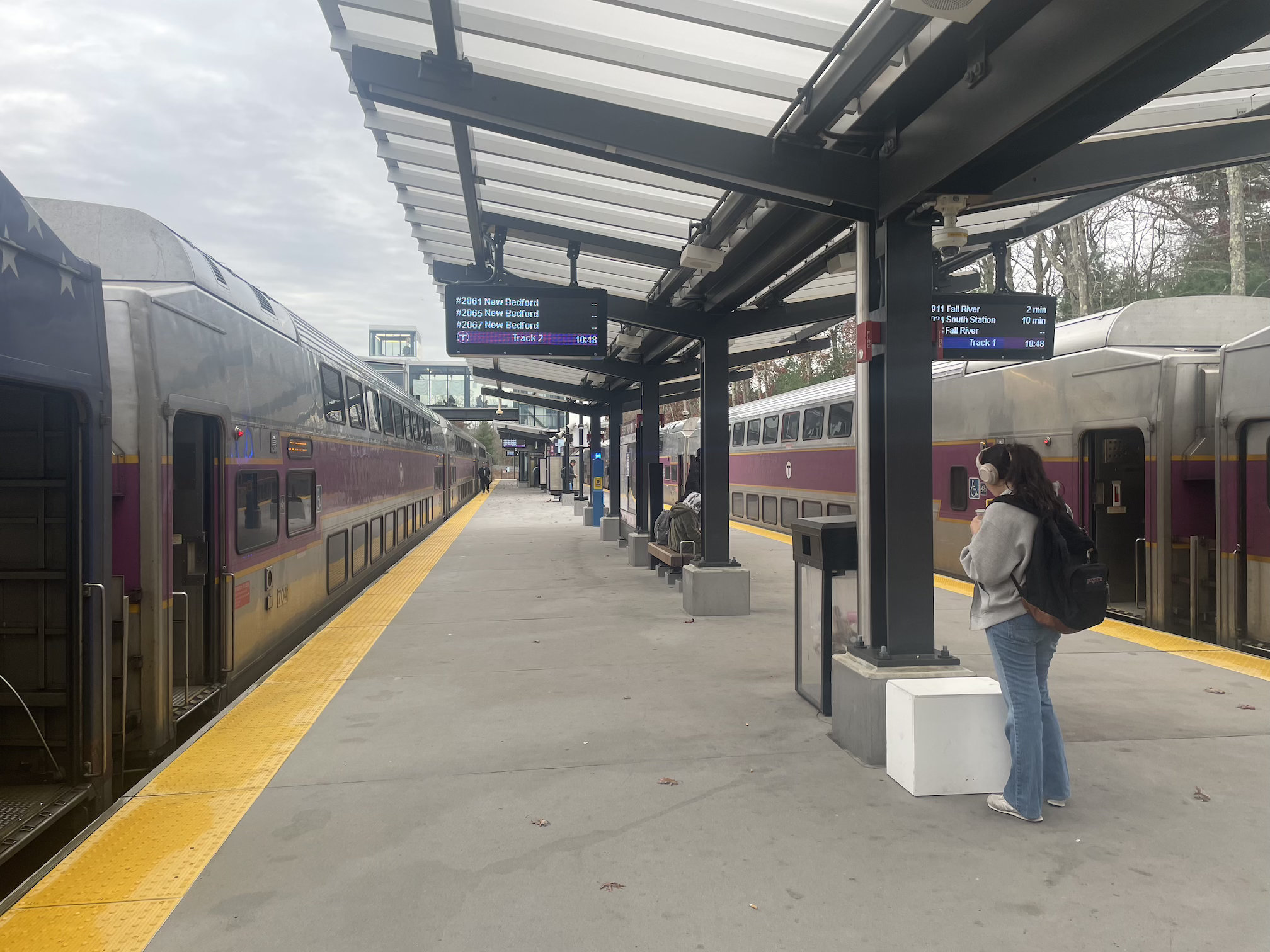Earlier this week, the MBTA hosted an informational meeting with potential design-build contractors to outline its plans to upgrade 10 stops on the B branch of the Green Line with wider platforms and accessibility for wheelchair users.
According to the MBTA's presentation, the project, tentatively scheduled to go under construction next year to be completed by the end of 2026, would upgrade 10 stops on the B branch west of Kenmore Square, where the Green Line runs in the median of Commonwealth Avenue.

Many of these stops today lack the basic amenities riders would expect to find at most bus stops, with nothing more than a narrow asphalt strip, with no shade or shelters, and no buffer between the platform and the adjacent roadway traffic on Commonwealth Avenue (see the photo at the top of this article for an example).
To make these stops compliant with the Americans With Disabilities Act (ADA) and other building codes, the project will widen those platforms and elevate them by 8 inches to make them level with the floors on Green Line trains.
The project will also add robust crash barriers between the platforms and the roadway, and add basic station amenities like lighting, benches, and wayfinding signage.

Additionally, although it's technically accessible already, the T plans to relocate the last stop on the B branch – the Boston College stop – from its current location, at the entrance to the Lake Street layover yard, to the median of Commonwealth Avenue just east of the Lake Street intersection.
All these changes will also make the B branch compatible with the T's new, longer "Type 10" Green Line trains, which are scheduled to enter service in 2027.
Earlier this year, the T received a $67.6 million Federal Transit Administration grant to upgrade 14 non-accessible stops along the Green Line's B and C branches. This project will address 5 of the stops included in that grant application.






